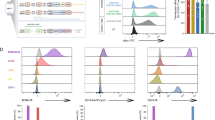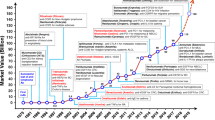Abstract
l-alanyl-l-glutamine (AlaGln) is dipeptide that has better solubility and stability than Glutamine (Gln). In this study, we evaluated the utility of this dipeptide during culture of POTELLIGENT™ Chinese hamster ovary (CHO) cells expressing anti-CD20 chimeric antibody. Although AlaGln in the culture medium lowered the specific growth rate, the MAb titer was maximized when Gln was completely replaced by AlaGln in both the basal and feed media. Moreover, AlaGln augmented production of antibody not only at flask scale but also at spinner scale, although the extent of this effect was dependent on the cell clone. To explore the mechanism responsible for the effect of AlaGln on cell growth, we measured apoptosis in the early phase of cell culture on days 8, 9, and 10. The apoptotic ratio was reduced in medium containing AlaGln. Ammonia was generated in medium containing Gln when it was maintained at 37 °C, which impeded the growth and productivity of the cells. In contrast, AlaGln produced less ammonia under these conditions, which may have been one of the properties associated with its beneficial effects. We conclude that certain dipeptides can serve as superior alternative sources of amino acids in cell culture and antibody production.






Similar content being viewed by others
Abbreviations
- MAb:
-
Monoclonal antibody
- ADCC:
-
Antibody-dependent cellular cytotoxicity
- SPR:
-
Specific mab production rate
References
Birch JR, Racher AJ (2006) Antibody production. Adv Drug Deliv Rev 58:671–685
Brian K (2009) Industrialization of MAb production technology. MAbs 1:443–452
Butler M, Christie A (1994) Adaptation of mammalian cells to non-ammoniagenic media. Cytotechnology 15:87–94
Buzanska L, Zablocka B, Dybel A, Domanska-Janik K, Albrecht J (2000) Delayed induction ob apoptosis by ammonia in C6 Glioma cells. Am J Physiol Gastrointest Liver Physiol 283:G986–G995
Christie A, Butler M (1994) Glutamine-based dipeptides are utilized in mammalian cell culture by extracellular hydrolysis catalyzed by specific peptidase. J Biotechnol 37:277–290
Dong J, Mandenius CF, Lubberstedt M, Urbaniak T, Nussler AKN, Knobeloch D, Gerlach JC, Zeilinger K (2008) Evaluation and optimization of hepatocyte culture media factors by design of experiments (DoE) methodology. Cytotechnology 57:251–261
Hale G (2006) Therapeutic antibodies-delivering the promise? Adv Drug Deliv Rev 58:633–639
Kanda Y, Yamane-Ohnuki N, Sakai N, Yamano K, Nakano R, Inoue M, Misaka H, Iida S, Wakitani M, Konnno Y, Yano K, Shitara K, Hosoi S, Satoh M (2006) Comparison of cell lines for stable production of fucose-negative antibodies with enhanced ADCC. Biotechnol Bioeng 94:680–688
Konno Y, Aoki M, Takagishi M, Sakai N, Koike M, Wakamatsu K, Hosoi S (2011) Enhancement of antibody production by the addition of Coenzyme-Q10. Cytotechnology 63:163–170
Minamoto Y, Ogawa K, Abe H, Iochi Y, Mitsugi K (1991) Development of a serum-free and heat-sterilizable medium and continuous high-density cell culture. Cytotechnology 5:S35–S51
Mori K, Iida S, Yamane-Ohnuki N, Kanda Y, Kuni-Kamochi R, Nakano R, Imai-Nishiya H, Okazaki A, Shinkawa T, Natsume A, Niwa R, Shitara K, Satoh M (2007) Nonfucosylated therapeutic antibodies: the next generation of therapeutic antibodies. Cytotechnology 55:109–114
Parampalli A, Eskridge K, Smith L, Meagher MM, Mowry MC, Subramanian A (2007) Developement of serum-free medium in CHO-DG44 cells using a central composite statistical design. Cytotechnology 54:57–68
Shields RL, Lai J, Keck R, O’Connell LY, Hong K, Meng YG, Weikert SH, Presta LG (2002) Lack of fucose on human IgG1 N-linked oligosaccharide improves binding to human Fcgamma RIII and antibody-dependent cellular toxicity. J Biol Chem 277:26733–26740
Shinkawa T, Nakamura K, Yamane N, Shoji-Hosaka E, Kanda Y, Sakurada M, Uchida K, Anazawa H, Satoh M, Yamasaki M, Hanai N, Shitara K (2003) The absence of fucose but not the presence of galactose or bisecting N-acetylglucosamine of human IgG1 complex-type oligosaccharides shows the critical role of enhancing antibody-dependent cellular cytotoxicity. J Biol Chem 278:3466–3473
Sun IL, Sun EE, Crane FL (1995) Comparison of growth stimulation of HeLa cells, HL-60 cells, and mouse fibroblasts by coenzyme Q10. Protoplasma 184:214–219
Suzuki H, Yanaka A, Shibahara T, Matsui H, Nakahara A, Tanaka N, Muto H, Momoi T, Uchiyama Y (2002) Ammonia-induced apoptosis is accelerated at higher pH is gastric surface mucous cells. Am J Physiol Gastrointest Liver Physiol 283:G986–G995
Tabata K, Hashimoto S (2007) Fermentative production of l-Alanyl-l-Glutamine by a metabolically engineered Escherichia coli strain expressing l-Amino Acid -Ligase. Appl Environ Microbiolo 2007:6378–6385
Tabata K, Ikeda H, Hashimoto S (2005) ywfE in Bacillus subtilis Codes for a Novel Enzyme, l-Amino Acid Ligase. J Bacteriol Aug 2005:5195–5202
Terada S, Sasaki M, Yanagihara K, Yamada H (2005) Preparation of silk protein sericin as mitogenic factor for better mammalian cell culture. J Biosci Bioeng 100:667–671
Walsh G (2006) Biopharmaceutical benchmarks 2006. Nat Biotech 24:769–776
Author information
Authors and Affiliations
Corresponding author
Rights and permissions
About this article
Cite this article
Imamoto, Y., Tanaka, H., Takahashi, K. et al. Advantages of AlaGln as an additive to cell culture medium: use with anti-CD20 chimeric antibody-producing POTELLIGENT™ CHO cell lines. Cytotechnology 65, 135–143 (2013). https://doi.org/10.1007/s10616-012-9468-8
Received:
Accepted:
Published:
Issue Date:
DOI: https://doi.org/10.1007/s10616-012-9468-8




